Deborah Swift's Blog, page 11
February 21, 2023
The Last Great Saxon Earls by Mercedes Rochelle #CoffeePotBookClub #AngloSaxon
Delighted to host Mercedes Rochelle today with the fabulous LAST GREAT SAXON EARLS SERIES:
GODWINE KINGMAKER
THE SONS OF GODWINE
FATAL RIVALRY
They showed so much promise. What happened to the Godwines? How did they lose their grip? Who was this Godwine anyway, first Earl of Wessex and known as the Kingmaker? Was he an unscrupulous schemer, using King and Witan to gain power? Or was he the greatest of all Saxon Earls, protector of the English against the hated Normans? The answer depends on who you ask.
He was befriended by the Danes, raised up by Canute the Great, given an Earldom and a wife from the highest Danish ranks. He sired nine children, among them four Earls, a Queen and a future King. Along with his power came a struggle to keep his enemies at bay, and Godwine’s best efforts were brought down by the misdeeds of his eldest son Swegn.
Although he became father-in-law to a reluctant Edward the Confessor, his fortunes dwindled as the Normans gained prominence at court. Driven into exile, Godwine regathered his forces and came back even stronger, only to discover that his second son Harold was destined to surpass him in renown and glory.
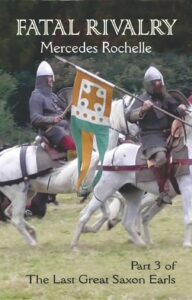 EXCERPT: Conflict between Swegn Godwineson and his cousin Beorn
EXCERPT: Conflict between Swegn Godwineson and his cousin Beorn
Swegn did not know where his father was, but he felt that only Godwine could help his cause now. He headed toward Dover first, thinking that was a good starting point. But he missed Godwine by half a day. His father had embarked with a small fleet and was sailing to Pevensey, which had been attacked by raiders.
Swegn rode hard on his trail. Arriving at Pevensey, he saw that Godwine was still present. There was no time to waste; Swegn leaped from his horse and ran to the great hall.
But he was too late. Beorn had already preceded him.
Swegn froze at the door, discovering Godwine in earnest conversation with his cousin. Despite himself, Swegn was overcome with that familiar surge of jealous rage, threatening to impair his badly needed judgment. Hoping for a happy reunion, he was greeted instead with a strained expression and a guarded smile.
“You are always welcome, son,” Godwine said, standing. “I hope you come in peace.”
“Father,” Swegn faltered, then glared at Beorn. “Will you leave us alone?”
“I think not,” Beorn retorted.
Godwine said nothing.
“Father, my brother and cousin seek to keep me from my earldom. Why do they need my lands, when they have their own?”
Godwine’s expression softened. “Swegn…”
“As I was making my peace with Edward, they came charging in and refused to cooperate. They turned him against me by their selfish bickering.”
Godwine swung on Beorn. “You did not tell me that. Is it true?”
“Partly. It would have happened anyway, in time.”
“How do you know that?” Swegn snarled.
“Because I know what kind of man you are.”
“Stop, both of you!” Godwine shook his head. “We are supposed to stick together. If our family is divided, our enemies will tear us to pieces.”
Shamed, the others stopped.
“And you, Swegn. Are you so selfish you didn’t take thought to ask about your son?”
Swegn’s eyes widened. “My son?”
“Yes, for all you care. He is at Winchester with Gytha.”
“What is his name?”
“Hakon.”
“And…Eadgifu?”
“Back at Leominster. They are no longer an Abbey, thanks to you, but the sisters continue to care for the poor.”
Swegn turned away to hide his feelings. Godwine swung on Beorn. “I am ashamed of you, and Harold, too. You should never have humiliated Swegn before the king. You have ruined all I worked for, these many months. I must start over again.
“What were you thinking of? Only your greed? If that’s what was so important to you, I could have given you compensation out of my own earldom.”
Beorn sighed. “Perhaps I can return to Edward, and change my position.” Swegn’s shoulders stiffened.
Godwine stared at Beorn, his eyes narrowing. “Do you mean that?”
“Yes, uncle. I would never willingly defy you.”
Swegn turned, incredulous. “What about Harold?”
Godwine said, “He has already taken some of the ships and headed west, after the raiders. But I think I can talk him into agreeing, as well.”
Swegn looked at Beorn. “You would do this for me?”
“I do it for your father.”
Satisfied, Godwine did not see the hate flow between the two.
Rather than return directly to the king at Sandwich, Swegn convinced Beorn that it was better to return overland to his ships. “Some of my crew are mercenaries,” he said. “I dare not leave them so long without a leader, or they may turn into pirates, in truth.”
Beorn looked him up and down. “It is in the opposite direction.”
“But then we can sail back to Sandwich, and make up for the lost time.”
Nodding uncertainly, Beorn agreed.
Their trip to Bosham was conducted in silence. The only thing Swegn said was to insist that Beorn sail on the same ship he did. Reluctantly, his cousin agreed.
Leaving their horses at Godwine’s estate, they had soon embarked on their way to Sandwich. The storms had passed to the west, and the sky was clear before them. Beorn stood at the bow of the ship, gazing forward, as if he could propel them faster toward their destination through sheer will. He heard rather than saw Swegn come up behind him.
“I suppose you think you have won,” Beorn said finally, turning distastefully to his cousin.
Swegn gave him a frown. “I will not have won until I have rid my family of your unwanted presence.”
Despite himself, Beorn was stung. “What makes you think your presence is so desirable?”
“I am the eldest. At least my father loves me.”
“Pah. He feels guilty, that’s all. Not that you deserve it.”
At first, Beorn didn’t realize the effect his words would have. But one look at Swegn told him he had gone too far.
His face flushed, Swegn was grabbing a knife from his belt. He snatched another from one of the crew and tossed it to his cousin.
“All right,” he growled, “let’s have it out once and for all.”
Beorn was ready. He caught the handle and crouched, point out.
They circled, feinting with the knives, left hands held out to block. Already several men were watching curiously.
Swegn looked eager, almost too anxious, while Beorn set his mouth, searching for an opening. The Dane lunged all of a sudden, flicking the point across Swegn’s face; then he smiled. A tiny line of red ran across the other’s cheek.
Swegn slowly touched the cut then crouched even lower, eyes deadly. He suddenly reversed the knife in his grip, drawing the blade backward across Beorn’s vision; the Dane threw up his arm for protection, taking a long slash across his forearm.
They had both drawn blood; both knew this was to the death. Swegn’s cut settled him down; he eased into a steely control, losing that edgy nervousness. Beorn lashed out at him; he ducked easily, responding with a thrust to the side. He missed his mark, only tearing the other’s tunic.
But Beorn was back again, feinting and striking, slashing again and again at his face. He was fast and effective, and Swegn had to step backwards, on the defensive; the blade cut into his right wrist, then slashed his other cheek.
Suddenly, Swegn switched the knife to his left hand, flying at his foe like a whirlwind. Caught off guard, Beorn tripped and fell, his knife flying. Somehow, Swegn couldn’t stop his thrust; before Beorn even hit the deck, the blade was buried in his chest. Gasping, Swegn looked at the witnesses. “You saw,” he said, wiping his bloody cheek. “It was a fair fight.”
Mumbling, the others turned away.
For a time, Swegn stared at his cousin, who sprawled awkwardly on a pile of ropes. He felt no relief, no satisfaction from the deed. Rather, he felt overwhelmed with self-pity. Now look what happened. Why couldn’t Beorn keep his mouth shut?
“Turn around,” he ordered. “We cannot go to Edward now.”
They proceeded west until Swegn decided what to do. By the time they reached Dartmouth, only two of the eight ships were with him; the rest had just sailed away. He put in at the town, so they could at least bury the body in the local church.
That done, the two ships sailed to Flanders.
CARRY ON READING – Read on #KINDLEUNLIMITED or BUY THE BOOK
 ABOUT MERCEDES
ABOUT MERCEDES
Mercedes Rochelle is an ardent lover of medieval history, and has channeled this interest into fiction writing. She believes that good Historical Fiction, or Faction as it’s coming to be known, is an excellent way to introduce the subject to curious readers. She also writes a blog: HistoricalBritainBlog.com to explore the history behind the story.
Born in St. Louis, MO, she received by BA in Literature at the Univ. of Missouri St.Louis in 1979 then moved to New York in 1982 while in her mid-20s to “see the world”. The search hasn’t ended!
Today she lives in Sergeantsville, NJ with her husband in a log home they had built themselves.
Social Media Links: Website: https://mercedesrochelle.com/Twitter: https://twitter.com/authorrochelle

February 9, 2023
A Rip in the Veil by Anna Belfrage #Review #CoffeePotBookClub #Timeslip
This one had been on my kindle for ages and came highly recommended, but I’m not really a fan of timeslip novels so I had kept putting it to one side. I think I always find that the actual time shift moment stretches my disbelief a little too much – the moment when someone falls through a picture, or gets sucked into a vortex. However Anna Belfrage is an expert at making the most of that moment, so I need not have feared it was going to be ‘too cheesy’. Instead we are treated to a moment which tingles all the senses, and allows us to feel what such a moment might really be like.
Of course being transported back into the 17th century gives Anna Belfrage a chance to reflect on society both then and now. There is what you would expect – the repression of women, the narrowness of society, but also an understanding of just how violent society was before our modern judicial system, the importance of agriculture and land, and the lack of material possessions, all things that Alex Lind has to come to grips with in her new life in a new century.
More than just a romance, this will please readers who like accurate history, but also appreciate a passionate relationship that is realistically portrayed. I appreciated all the minor characters in the book too, such as Matthew’s bitter and vengeful brother, and Alex’s traumatised husband, as they each have a story to tell. Multi-layered and exciting, this is historical romantic fiction at its best.
MORE ABOUT THE BOOK
On a muggy August day in 2002 Alex Lind disappears. On an equally stifling August day in 1658, Matthew Graham finds her on a Scottish moor. Life will never be the same for Alex – or for Matthew.
Alexandra Lind is thrown three centuries backwards in time to land at the feet of escaped convict Matthew Graham
Matthew doesn’t know what to make of this strange woman who has seemingly fallen from the skies—what is she, a witch
Alex is convinced the tall, gaunt man is some sort of hermit, an oddball, but she quickly realises the odd one out is she, not he
Catapulted from a life of modern comfort, Alex grapples with her new existence, further complicated by the dawning realization that someone from her time has followed her here—and not exactly to extend a helping hand.
Potential compensation for this brutal shift in fate comes in the shape of Matthew, a man she should never have met, not when she was born three centuries after him. But Matthew comes with baggage of his own and on occasion his past threatens them both. At times Alex finds it all excessively exciting, longing for the structured life she used to have.
How will she ever get back? And more importantly, does she really want to?
GET THIS BOOK:
This title is available to read on #KindleUnlimited
BUY THE BOOK – http://myBook.to/ARIV1
Find out more about Anna, her books and enjoy her eclectic historical blog on her website,www.annabelfrage.com
Social Media Twitter: @abelfrageauthor
Facebook: https://www.facebook.com/annabelfrageauthor Amazon Author Page: http://Author.to/ABG
 The post A Rip in the Veil by Anna Belfrage #Review #CoffeePotBookClub #Timeslip first appeared on Deborah Swift.
The post A Rip in the Veil by Anna Belfrage #Review #CoffeePotBookClub #Timeslip first appeared on Deborah Swift.
January 31, 2023
White Sails by Emma Lombard – Hardback Collector’s Edition #CoffeePotBookClub
Blurb:
Award-winner, The White Sails Series, where icy winter storms, opportunistic mercenaries, uncharted lands, and a colourful crew of sailors are all lashed together by an epic love story. This collector’s edition includes all four books in the series.
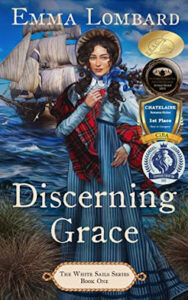 Discerning Grace. London Town, 1826. Society life is stifling enough for Grace Baxter without worrying about finding true love or happiness. Enlisting with the Royal Navy, disguised as a lad, she is tossed into a watery world where mother nature is not the only threat to her life. Brazenly, she holds her own against a ship full of sailors—until her loud mouth lands her bare-bottomed over a cannon for insubordination.
Discerning Grace. London Town, 1826. Society life is stifling enough for Grace Baxter without worrying about finding true love or happiness. Enlisting with the Royal Navy, disguised as a lad, she is tossed into a watery world where mother nature is not the only threat to her life. Brazenly, she holds her own against a ship full of sailors—until her loud mouth lands her bare-bottomed over a cannon for insubordination.
Grace on the Horizon. Adrift on a raft of shame in the sea of 1830s London society, Grace’s desperation to leave London forces Seamus to accept a dubious commission on the private explorer, Clover. With the expedition financed by Colonel Hamilton, Seamus is tasked with mapping a round-the-world voyage. But Colonel Hamilton has an additional package that requires delivering—Father Babcock—a priest wanted for murder.
Grace Arising. The burgeoning 1840s New Holland wool market is irresistible to entrepreneurial souls like Seamus and Grace. Having survived unimaginable tragedy together, they plan a fresh start aboard their new ship, the Elias. When Seamus is gravely injured, Grace must assume command and see the ship’s souls to safety. Except First Mate, Lucius Chittenden, refuses to be commanded by a woman.
Christmas at Gilly Downs (A Novella). 1853, Colony of New South Wales. This Christmas Novella is a snapshot in time ten years after Grace Arising. It offers an intimate peek of the most popular characters from The White Sails Series as they navigate life in their newly adopted country.
Find out more here: https://thecoffeepotbookclub.blogspot.com/2023/01/blog-tour-white-sails-series-collectors-edition.html

January 11, 2023
Tyre – An ancient city reveals a hidden truth #Lebanon #history @EHBernardAuthor @cathiedunn
I’m delighted to be featuring award winning author Elizabeth Hutchison Bernard on my blog today. We are being treated to a trip to Lebanon at the turn of the 20th Century, via Constantinople and the Orient Express! Find out more about the ancient city of Tyre.
SISTERS OF CASTLE LEOD: A NOVEL: An Ancient City Reveals a Hidden Truth
Elizabeth Hutchison Bernard
Thanks, Deborah, for inviting my guest post about my latest historical novel, SISTERS OF CASTLE LEOD (release date: January 19, 2023). You asked me to talk about a particular object or place that plays a role in the story of my real-life characters, Sibell Mackenzie, who became the third Countess of Cromartie in 1895, and her younger sister Lady Constance. The obvious choice might be Castle Leod, where the sisters grew up and which Sibell inherited as part of the Cromartie estates, but today I want to explore with you and your readers a different place: the ancient Phoenician port of Tyre, along the Mediterranean coast of modern-day Lebanon.
There are several different geographical settings in my novel: the Scottish Highlands, London, Venice, New York City, Constantinople (now Istanbul, Turkey), and Tyre. I have personally visited all these locales except for Istanbul and Tyre. But then, few authors of historical fiction have the luxury of traveling to every place they write about. In this instance, there was no way to avoid the need for a bit of armchair research. In my novel, it is important that Sibell journeys to Tyre in search of her past and a path to the future she so desperately desires.
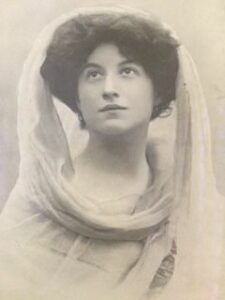 To understand Sibell’s journey, one must know a little bit about her. Inheriting her father’s titles and estates at the age of seventeen, she achieves the rare distinction of becoming a peeress in her own right and also one of the richest landowners in Scotland. A quiet, bookish young woman, she achieves fame as an author of mystical romance novels and becomes well-known as a spiritualist and a believer in reincarnation. All this, as well as her public claim of having a Phoenician spirit guide, is important to both the factual and fictional elements of the novel.
To understand Sibell’s journey, one must know a little bit about her. Inheriting her father’s titles and estates at the age of seventeen, she achieves the rare distinction of becoming a peeress in her own right and also one of the richest landowners in Scotland. A quiet, bookish young woman, she achieves fame as an author of mystical romance novels and becomes well-known as a spiritualist and a believer in reincarnation. All this, as well as her public claim of having a Phoenician spirit guide, is important to both the factual and fictional elements of the novel.
While most of the characters in SISTERS OF CASTLE LEOD are inspired by real people, one of the purely imagined characters is the young Arab who convinces Sibell that they were lovers in a past life—in Tyre, just before the brutal invasion of Alexander the Great in 332 BC. Though at first reluctant to believe him, Sibell eventually finds herself drawn to the historic city where, to her surprise, the site of an ancient ruin stirs what seem to be vague memories of the past. No, my book is not a time-travel romance! But Sibell often has brief flashes of an Unseen World that are key to her view of life, death, and destiny.
I loved researching the history of the Phoenicians and especially Tyre. One of the fascinating facts I discovered was that, in addition to being an important port city for Phoenician merchant vessels, Tyre was famous for its production of a rich purple dye made from snail shells. The downside to this flourishing enterprise was that collecting snails by the thousands and leaving them to decompose in huge vats created an awful stench. But these special dyes were highly prized and very expensive. Eventually, Tyrian purple became an official imperial color, and its use was restricted accordingly
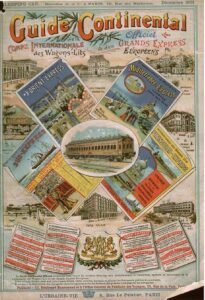 When Sibell finally arrives in Tyre—after 80 hours of travel from Paris to Constantinople on the Orient Express, four days on a ship from Constantinople to Beirut, and two days of a bumpy carriage ride along the Mediterranean coast, escorted by armed guards—her first reaction is disappointment. There is little evidence of the Phoenicians. Most of what she can see from the main road into the city are relics of the Roman era—the towering stone arch and double colonnade of green-veined marble columns, and the remains of a hippodrome that once held twenty thousand spectators. Looking out across the water, she sees the land bridge connecting the mainland to the former island port, an enduring reminder of Alexander’s seven-month siege, and she is overcome with sadness for Tyre’s citizens, most of whom were killed or forced into slavery. But there is more awaiting Sibell in Tyre. She is soon to discover who she really is and make one of the most difficult decisions of her life.
When Sibell finally arrives in Tyre—after 80 hours of travel from Paris to Constantinople on the Orient Express, four days on a ship from Constantinople to Beirut, and two days of a bumpy carriage ride along the Mediterranean coast, escorted by armed guards—her first reaction is disappointment. There is little evidence of the Phoenicians. Most of what she can see from the main road into the city are relics of the Roman era—the towering stone arch and double colonnade of green-veined marble columns, and the remains of a hippodrome that once held twenty thousand spectators. Looking out across the water, she sees the land bridge connecting the mainland to the former island port, an enduring reminder of Alexander’s seven-month siege, and she is overcome with sadness for Tyre’s citizens, most of whom were killed or forced into slavery. But there is more awaiting Sibell in Tyre. She is soon to discover who she really is and make one of the most difficult decisions of her life.
The ancient city of Tyre plays a unique role in a novel that is a blend of historical biography and fiction. Narrated by Sibell, the story could not be told without a judicious touch of the supernatural. Sibell’s experiences of the Unseen World and her questioning of reality are part of what separates her from the world at large and especially from her sister Constance. The Mackenzie sisters are complete opposites in looks, talents, and temperament. But there is more to the conflict between them than these observable differences. SISTERS OF CASTLE LEOD is a story of two sisters torn apart by jealousy and superstition … and the impossible leap of faith that could finally bring them together.
ABOUT THE BOOK
 **Finalist in the 2022 American Writing Awards**
**Finalist in the 2022 American Writing Awards**
Millions are fans of Diana Gabaldon’s popular Outlander books and television series, but few know that Gabaldon’s fictional Castle Leoch was inspired by a real Scottish castle, Castle Leod. The two sisters who lived there at the turn of the twentieth century were among the most fascinating and talked-about women of their era.
Lady Sibell Mackenzie is a spiritualist, a believer in reincarnation, and a popular author of mystical romances. Petite and proper, she values tradition and duty. Her younger sister Lady Constance, swimming champion and big game hunter, is a statuesque beauty who scandalizes British society with her public displays of Greek-style barefoot dancing. The differences between the sisters escalate into conflict after Sibell inherits their late father’s vast estates and the title 3rd Countess of Cromartie. But it is the birth of Sibell’s daughter that sets in motion a series of bizarre and tragic events, pitting sister against sister and propelling Sibell on a desperate mission to challenge the power of fate.
Sisters of Castle Leod, by award-winning author Elizabeth Hutchison Bernard, is the emotionally charged story of two sisters torn apart by jealousy and superstition, and the impossible leap of faith that could finally bring them together.
BUY THE BOOK https://books2read.com/u/3RzAJY #KindleUnlimited
CONNECT WITH ELIZABETH
Website: www.EHBernard.com Twitter: https://www.twitter.com/EHBernardAuthor Facebook: https://www.facebook.com/EHBernardAuthor
The post Tyre – An ancient city reveals a hidden truth #Lebanon #history @EHBernardAuthor @cathiedunn first appeared on Deborah Swift.December 12, 2022
Read all about the new release Minotaur’s Lair by Luciana Cavallaro #CoffeePotBookClub @ClucianaLuciana
Take a look at this new historical fantasy based on Greek Mythology!
The Minotaur stirs. Evan is drugged to forget the gods’ quest.
Evan and his companions are entrapped by the Amazon Queen Antioche and her warriors. Memories and allegiances are tested. The Dark Master’s victorious revenge over the gods is almost complete. The plight of the High Priestess is precarious, her health ailing, and unable to rescue her brother and fellow Atlanteans.
The last sacred relic, secreted in the lair of the Minotaur, must be recovered or the Dark Master’s succession plans of a new god are complete. The mystical lands of Krete, the final stage of Evan’s journey, are within his grasp. He must succeed so his father, Zeus, fulfills his promise. Then there is Queen Antioche, and the precious gifts she presents him.
Will Evan return home, and what will become of his future?
Minotaur’s Lair is the third and final book in the action-packed Servant of the Gods historical fiction series. If you enjoy well-researched landscapes, historic characters, excitement, mythical creatures and unique settings, then you’ll love Luciana Cavallaro’s heroic odyssey.
BUY THE BOOK: Universal Buy Link: https://mybook.to/minotaurs_lair_ebook
Smashwords: https://www.smashwords.com/books/view/1166228
 Get in touch with Luciana: https://luccav.me
Get in touch with Luciana: https://luccav.me
Luciana Cavallaro’s alter ego is a high school teacher where she plugs away educating teenagers the merits of reading and ancient history. She often looks for a brick wall to bang her head when faced with disinterested looks from her students. She’s also a historical fantasy and thriller/suspense author, who creates fast-paced, action-packed series for her readers.
Born and raised in Western Australia, residing in Perth, Luciana loves to travel and since getting her passport at the ripe old age of twenty-four has toured parts of Europe, a legacy of her Italian heritage. She enjoys being active, going out with friends, reading and tries to grow her own vegetables. She dreams of travelling again and visiting the ancient sites that inspired her stories, that is when she’s not spending time being an unofficial stunt person and knocking herself out in the process.
Social Media Links: Twitter @ClucianaLuciana Facebook: https://www.facebook.com/pages/Luciana-Cavallaro-Writer/304218202959903
The post Read all about the new release Minotaur’s Lair by Luciana Cavallaro #CoffeePotBookClub @ClucianaLuciana first appeared on Deborah Swift.December 11, 2022
The Model Spy by Maryka Baggio
THE MODEL SPY is based on the true story of Toto Koopman, who spied for the Allies and Italian Resistance during World War II. Largely unknown today, Toto was arguably the first woman to spy for the British Intelligence Service. Operating in the hotbed of Mussolini’s Italy, she courted danger every step of the way. As the war entered its final stages, she faced off against the most brutal of forces—Germany’s Intelligence Service, the Abwehr.
PRAISE FOR THE MODEL SPY
“In this impressive biographical novel, Maryka Biaggio presents World War II spy Toto Koopman as he remarkable woman she proved herself to be. Moving and illuminating, this dramatic depiction of an intrepid individual is an admirable blend of fascinating fact and wonderfully conceived fiction.” ~Margaret Porter, author of Beautiful Invention: A Novel of Hedy Lamarr
From the Back Cover
Celebrated model Toto Koopman had beauty, brains, and fame. Born to a Dutch father and Indonesian mother, she took up the life of a bon vivant in 1920s Paris and modeled for Vogue magazine and Coco Chanel. But modeling didn’t satisfy her. Fluent in six languages, she was adventurous and fascinated by world politics.
In London she attracted the attention of Lord Beaverbrook, the William Randolph Hearst of England. She soon became his confidante, companion, and translator, traversing the Continent and finding herself caught in the winds of impending war. Beaverbrook introduced her to influential people, including a director at the British Intelligence Service, who schooled her in espionage.
When Germany invaded Poland, Toto came face to face with reality: either fight the Axis powers or lose the world she loved. She moved to Florence, joined the Italian resistance, and began sending intelligence to London. But Mussolini’s Blackshirts and the Nazi’s military intelligence had her in their crosshairs and, as they pursued her, her courage was tested to the limit.
BUY THE BOOK US Amazon UK Amazon
About Maryka
Maryka Biaggio is an award-winning novelist who specializes in historical fiction based on real people. She enjoys the challenge of starting with actual historical figures and dramatizing their lives– figuring out what motivated them to behave as they did, studying how the cultural and historical context may have influenced them, and recreating some sense of their emotional world through dialogue and action. Doubleday published her debut novel, Parlor Games, in 2013. Eden Waits and The Point of Vanishing were published by Milford House Press (2019, 2021). She lives in Portland, Oregon.
Website: www.MarykaBiaggio.com
Facebook: www.facebook.com/ParlorGames
December 6, 2022
Son of Anger by Donovan Cook – Read an Extract #CoffeePotBookClub #Historical #Viking
Read this gripping extract from Son of Anger, Book 1 in the Ormstunga Trilogy
They were halfway through their breakfast when the horn blew. The men looked up from their bowls and at each other. It was time. Snorri looked around at the seven men he thought of as friends and brothers.
“My brothers,” he said with a smile, “I will see you after the battle or in Valhalla.”
“After the battle or in Valhalla,” they echoed. Ulf felt oddly comforted by the words, the surety behind them that they will meet again. As they went to their tents to get their spears and shields, Ulf wondered if his friends felt as nervous as he did.
“Drumbr!” Thorbjorn shouted over his shoulder. “If you get to Valhalla before me, make sure you leave me some of the mead.”
“No need to worry about that. The mead in Valhalla is endless,” Brak Drumbr responded.
“Not with the way you drink. You’d drink old Heidrun dry before any of us got there,” his brother quipped. The men laughed as they got their spears and shields.
Ulf saw that Vidar wasn’t in the tent when he went in. He thought that was strange. Maybe Vidar was already outside, but then why had Ulf not seen him? Ulf took his spear and shield and went out to meet the others. When he got to the hill, Thorgils was busy giving the orders.
“Snorri, I want you and your men on the right flank. Amund, you will be on the left flank.” He looked at the two men and was satisfied with their nods. “Now, where in Odin’s name is Ragnar?” Ulf realized Ragnar was not with the jarl, which was also strange.
“Ragnar?” Snorri asked, also seeing that his father’s champion wasn’t there. He knew the champion would want to be nowhere else right now.
“Yes, I sent him to my tent to fetch my helmet and to get Thorvald. He should be here as well.”
Snorri shrugged. “I’m sure he is on his way. Maybe he had to take a piss first.”
“Snorri’s right,” Jarl Amund answered. “I will get my men ready,” he said and walked away. Ulf saw him look at his son, Oddi, and give the briefest of nods as he did so.
“Perhaps,” Thorgils said. “Snorri, you do the same.” The two of them clasped hands. “After the battle or in Valhalla.”
“After the battle or in Valhalla, Father,” Snorri responded and walked to his men.
“Ulf,” the jarl said before Ulf could follow Snorri. Ulf turned and looked at the jarl. “May Tyr be with you today.” Ulf was surprised by the words. The jarl had never liked him, or so it had seemed. Ulf nodded his thanks and went after Snorri.
He was surprised not to see Vidar waiting for him by Snorri’s men. “Anyone seen Vidar?” he asked as he planted his spear into the ground to put his helmet on.
“No, thought he was with you,” Asbjorn said. He had been less hostile towards Ulf after they had seen Griml, but Ulf still felt some distrust from him.
“He wasn’t in the tent when I got there.”
“He’ll be here,” Snorri said, smiling at him.
Ulf nodded and made sure his helmet sat firmly. The enemy line formed up opposite theirs. They were close enough so he could see the individual faces of the men who wanted to kill him. Their line was longer than Thorgils’, but they had expected that. Griml had more men. A ripple ran through the line near the centre, the way wheat fields parted when walked through, and Ulf saw him. It was hard not to, he was at least two heads above the rest. He walked through his cheering men with his arms raised in the air, filled with arrogance and preening like a prized cockerel showing off its flamboyant plumage. Only, a prized cockerel wasn’t so ugly, or as frightening.
Griml stood in front of his men and looked along the line of Thorgils’ men like he was searching for something. Ulf did not feel the shock he had felt when he first saw Griml outside his hall, but he felt the same fear and uncertainty run through him. Griml carried on searching along the line until he found what he was looking for. Ulf. He locked eyes with him and an arrogant grin spread across his ugly face, revealing a mouth of rotten teeth. Ulf could only stare back, caught in the emptiness of the giant man’s eyes. The path to Hel, through the bloody marshes of his dreams. Griml walked along the line of his men, his eyes still fixed on Ulf. He didn’t seem to care about the two hundred other men. He didn’t seem to be afraid of them. But then, fear was probably a feeling Griml had never felt before.
“What’s he doing?” Snorri asked, but got no response. All around him men muttered the same question, like Snorri, not understanding what they saw.
Ulf had visions of his dreams again as Griml came closer and it took all his will not to shudder in fear. Finally, Griml stopped, directly opposite Ulf.
“Maybe he’s trying to insult your father?” Oddi suggested.
“Or he wants us. We did kidnap his bride,” Thorbjorn suggested.
“No, he’s looking at Ulf. He wants Ulf, not us,” Snorri said, frowning as he tried to understand.
 More about Son of Anger:
More about Son of Anger:
Ulf is like a storm, slowly building up its power, he grows more dangerous with each passing moment. And like all storms, he will eventually break. When he does, he will destroy everything in his path.
Ulf is one of a long line of famous Norse warriors. His ancestor Tyr was no ordinary man, but the Norse God of War. Ulf, however, knows nothing about being a warrior.
Everything changes when a stranger arrives on Ulf’s small farm in Vikenfjord. The only family he’s ever known are slaughtered and the one reminder of his father is stolen — Ulf’s father’s sword, Ormstunga. Ulf’s destiny is decided.
Are the gods punishing him? All Ulf knows is that he has to avenge his family. He sets off on an adventure that will take him across oceans, into the eye of danger, on a quest to reclaim his family’s honour.
The gods are roused. One warrior can answer to them. The Son of Anger.
Connect with Donovan: Website: https://www.donovancook.net/
The post Son of Anger by Donovan Cook – Read an Extract #CoffeePotBookClub #Historical #Viking first appeared on Deborah Swift.December 5, 2022
The Hearts of All on Fire by Alana White #15thCentury #MurderMystery #CoffeePotBookClub
Florence, 1473. An impossible murder. A bitter rivalry. A serpent in the ranks.
Florentine investigator Guid’Antonio Vespucci returns to Florence from a government mission to find his dreams of success shattered. Life is good—but then a wealthy merchant dies from mushroom poisoning at Guid’Antonio’s Saint John’s Day table, and Guid’Antonio’s servant is charged with murder. Convinced of the youth’s innocence and fearful the killer may strike again, Guid’Antonio launches a private investigation into the merchant’s death, unaware that at the same time powerful enemies are conspiring to overthrow the Florentine Republic—and him. A clever, richly evocative tale for lovers of medieval and renaissance mysteries everywhere, The Hearts of All on Fire is a timeless story of family relationships coupled with themes of love, loss, betrayal and, above all, hope in a challenging world.
 Buy The Book https://books2read.com/u/md1RGZ
Buy The Book https://books2read.com/u/md1RGZ
Barnes & Noble Paperback: https://www.barnesandnoble.com/w/the-hearts-of-all-on-fire-alana-white/1141662345
Waterstones Paperback: https://www.waterstones.com/book/the-hearts-of-all-on-fire/alana-white/9781639884216
About Alana White:
Alana White’s passion for Renaissance Italy has taken her to Florence for research on the Vespucci and Medici families on numerous occasions. There along cobbled streets unchanged over the centuries, she traces their footsteps, listening to their imagined voices, including that of her protagonist, Guid’Antonio Vespucci and his friends, Sandro Botticelli, Michelangelo, Lorenzo de’ Medici.
Alana’s first short story featuring real-life fifteenth-century lawyer Guid’Antonio Vespucci and his favorite nephew, Amerigo Vespucci, was a Macavity Award finalist and led to the Guid’Antonio Vespucci Mystery Series featuring “The Sign of the Weeping Virgin” (Book I) and “The Hearts of All on Fire” (Book II). She is a member of the Women’s National Book Association and the Historical Novel Society, among other organizations. She loves hearing from readers, and you can contact her at her website, www.alanawhite.com.
Twitter: https://twitter.com/AlanaWhite1480 Facebook: https://www.facebook.com/authoralanawhite/ Instagram: https://www.instagram.com/alanawhiteauthor/
The post The Hearts of All on Fire by Alana White #15thCentury #MurderMystery #CoffeePotBookClub first appeared on Deborah Swift.December 1, 2022
The Fortune Keeper – and my Newsletter
Hello to followers of my blog. This is the sort of thing I send out in my Newsletter to let people know about my books, and to keep in touch with readers. You can join the newsletter and my company of readers by clicking the main link on my website.
New Release Newsletter:
Thank you to all of you – you are the people who have supported my writing by buying or borrowing books, giving feedback or leaving reviews, and also by replying to my newsletters so I feel connected to my readers. Thanks to you, The Fortune Keeper is already a ‘Hot New Release’ on Amazon. So you might need oven gloves if you pick it up today! The ebook will stay at 99p/99c until after the weekend then go back to its regular price.
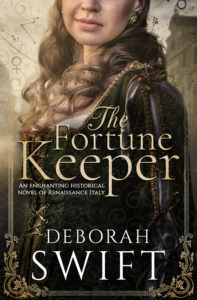 Here it is at last – Publication Day for The Fortune Keeper
Here it is at last – Publication Day for The Fortune Keeper
I’m celebrating! The Fortune Keeper is available now in paperback and ebook, and Diana Croft is recording the audiobook which will be out soon.
You can buy the book HERE: https://mybook.to/FortuneKeeper
More about THE FORTUNE KEEPER
Count your nights by stars, not by shadows ~ Italian Proverb
Winter in Venice 1643
Mia Caiozzi is determined to discover her destiny by studying the science of astronomy. But her stepmother Giulia forbids her to engage in this dangerous occupation, fearing it will lead her into trouble. The ideas of Galileo are banned by the Inquisition, so Mia must study in secret.
Giulia insists Mia should live quietly out of public view. If not, it could threaten them all. Giulia’s real name is Giulia Tofana, renowned for her poison Aqua Tofana, and she is in hiding from the Duke de Verdi’s family who are intent on revenge for the death of their brother. But Mia doesn’t know this, and rebels against Giulia, determined to go her own way.
When the two secret lives collide, it has far-reaching and fatal consequences that will change both their lives forever.
Set amongst opulent palazzos and shimmering canals, The Fortune Keeper is the third novel of adventure and romance based on the life and legend of Giulia Tofana.
‘Swift has an almost visceral understanding of what makes history worth reading, and she is also the perfect tour-guide to take her readers on a trip back in time to a dangerous past … a must-read for fans of quality Historical Fiction.’ Coffee Pot Book Club ★★★★★
The Cutting Room Table
Writing a book is a long process, and the book has been a year in the making. During the process many alterations and changes take place, which is why you need a good editor who will pick up any inconsistencies and plot-holes. Richard Sheehan, my editor, is great at picking these out, so I’m really grateful to him for his invaluable help.
Here is a chunk of text I cut out in order for the narrative to move more quickly near the end of the book. You are the only people to see this, as it doesn’t appear in the final version of the book. If you get the book, you will soon see where it would have fitted!
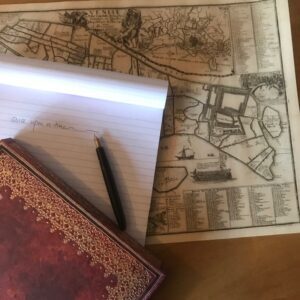
Unpublished Extract from The Fortune Keeper
Giulia stumbled ashore from the fishing vessel at the port of Pescara, in the Kingdom of Naples. She brushed down her habit and tried to stand upright, though she was weary and the journey had taken three and a half days, far longer than she’d hoped. She had refused food from the fishermen, who had taken pity on her when no boat was to be had further up the coast. They had taken her aboard, hoping a nun would bring them luck, and persuade God to give them a good catch.
Unfortunately it meant waiting whilst they filled their nets, when all she wanted to do was get nearer to where Mia was held hostage. She sent up a prayer for her to Santa Olivia. Please, give her protection. Let me not be too late.
Her sea-legs almost gave way as she staggered up the stone slipway to the rough-rendered town. The sun was hot now, and her face rimed with spray. She scrubbed it away, feeling the taste of salt on her lips. She had been at sea so long and her stomach had deposited its contents into the water too often. Now she was weak, but determined to find a carriage that would take her to Venice. She gazed at the gulls enviously as they screeched and wheeled above her head. What she wouldn’t give for their wings right now.
At the main square she asked directions and there was a post with the times of the carriages chalked upon it. She stared at the times aghast. A carriage had departed an hour ago, and there was not another until tomorrow. She almost wept. And the hardest part of the journey was to come – through mountain passes and long plains.
She had to get there somehow. Lifting her bag of essentials, she headed for the church. The priest was unable to offer any solution, except to loan her a mule, and the services of his serving man, who would guide her to the next town.
Giulia remembered the feeling of being alone and running away all too well. Only this time she was running to something, and not away from it.
Thank you for reading!
 Get in the mood for the book with an atmospheric 4 minute Video trip to Venice
Get in the mood for the book with an atmospheric 4 minute Video trip to Venice
https://www.youtube.com/watch?v=RjQGHNh0d-A
For writers:
Many thanks to those of you who came to my History Quill Class on Engaging your Reader’s Imagination. I hope I’ve put my own ideas into practice! It’s always a slippery slope to give other writers advice, because all novels are a unique product of one person’s mind, and their particular faith in the story they are telling. And there are so many ways to tell a successful story. I am so often in awe of writers who can do things with their text that I can’t.
There will be a few articles from me coinciding with this launch, as I will be doing an online blog tour. The first article on Crime and mask-wearing in Renaissance Venice is live here in the Historia Magazine.
I will put links to the rest in my next newsletter in December.
Meanwhile, here is my article on Writing a Series of Stand-Alones on Carol McGrath’s blog.
There is an article explaining my editing process here: https://deborahswift.com/editing-historical-fiction/ (Sorry about the lack of pictures, they didn’t transfer from my old website)
Home News
I am working on the next WW2 book now, (in my newly shelved office) and taking some time to read other people’s books, to reflect and to spend time with my family. My sister is visiting today and will arrive from Scotland by train so we can spend some time together and catch up. I’m expecting lots of reminiscences about growing up, even though that was — ‘gulp’ years ago!
My current reading is ‘Spy Capital of Britain’ – Research for my WW2 book, and ‘V is for Victory’ by Lissa Evans (who wrote the book of the film ‘Their Finest’). Both are really interesting books. The first one I suspect is only of interest to geeky people like me who want to know why rural Bedfordshire became a hot-bed of intelligence in WW2, but Lissa Evans’ book is a great example of characters that really live in the imagination.
The winner of this month’s draw for an e-copy of The Fortune Keeper is …
Next month will be a special Christmas draw with more winners, and I hope some festive cheer
Until next time
Deborah x
The post The Fortune Keeper – and my Newsletter first appeared on Deborah Swift.November 10, 2022
Writing Viking women back into history by Jean Gill #Viking #HistoricalFiction #amwriting
My guest today is Jean Gill, here to tell us more about her fantastic Orkney saga and the Viking women in her novel.

Ring of Brodgar, Orkney
Meek and anonymous or shield-maidens laying about them with axes? What were Viking women really like? These were the questions in my mind when I started researching 12th century Viking Orkney so I could inhabit a society new to me and write the story that had to be told. A story that began for me in the prehistoric burial chamber of Maehowe on Mainland, Orkney, when the guide said the magic words, ‘12th century’ and I realised that the graffiti on the walls around me were Viking runes, carved in my special period.
In The Troubadours series, I included the adventures of amazing real and fictional women in 12th century France, Spain, the Holy Land and Wales. Could I do justice to the medieval women who’d lived on these bleak islands that were a part of Norway, about which I knew nothing? One of the runic messages on that wall was Jórsalaheim-farers broke Orkhaugr. Carved by Hlif, the Jarl’s housekeeper.
Jórsalaheim-farers means Jerusalem-farers, in other words, pilgrims. I already knew that the Jarl (Earl) of Orkney set sail for Jerusalem in 1150 or 1151 and called in at Narbonne en route, where he fell in love with its hereditary lady ruler Viscomtesse Ermenarda (a key character and episode in my novel Song at Dawn).
Orkhaugr means the prehistoric tomb of Maeshowe, which was broken into during the 12th century. And Hlif is a woman’s name. These runes were carved by a woman named Hlif, who was housekeeper to the Earl of Orkney. Not only was this woman carving runes but she also had an important profession: housekeeper or even steward, if we try to remove the sexist bias in the choice of term; and she was recording a historical event. The pilgrims broke into the tomb. I can’t tell you how exciting this was, how much it challenged the ‘meek and anonymous’ notion of Viking women while not suggesting a murderous shield-maiden. Hlif might well have used an axe to carve the runes, as the archaelogists only say that different tools were used for the various messages. But I did not imagine her wielding an axe on raiding and pillaging trips. She had power as manager of the Earl’s Bu (Hall) and the notion that women generally trained as warriors strikes me as unlikely. There is no evidence that they didn’t, and the mythical Valkyries are indeed warrior-maidens, but I am enough in awe of the real, recorded achievements of women without writing them into shield-wall warfare.
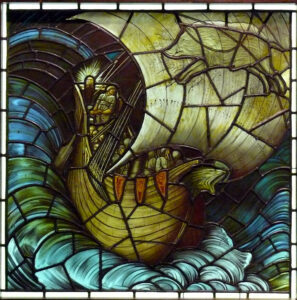
Viking Ship Stained Glass by Burne-Jones
In the last twenty years there have been some stunning archeological finds, from boat burials to jewellery hoards, that have added complexity to the previous image of Vikings as murdering raiders. The current picture of traders and travellers, whose colonies included eastern Europe and parts of England, includes active roles for women and many surprises.
Women had property rights, even within marriage, and could demand a divorce. Those are more
rights than women had in 19 th century Britain.
Women travelled. They were part of new colonies and they sailed on merchant ships
Women traded and took responsibility for finances.
Women were spinners and weavers, making the sails so vital for Viking culture. ‘Spinster’ was a title to be proud of in a society where men’s fates were decided by the mythical (female) Norns.
Women were farmers and managers, especially when their menfolk were on raiding trips in the spring and summer.
Women with magical powers (the volva) were respected and consulted by gods and men in myths and sagas. Wands have been found in burial goods beside women’s skeletons but not beside men’s. ‘Witches’ might have been feared but they were also revered and not persecuted as in later British Christian history.
Some women thralls (slaves) integrated into society and married Viking men. It was not considered a stigma for a Viking to have an Irish thrall mother or grandmother. Hitting a woman was considered unmanly and, in the sagas, led to divorce or revenge.
This is not to say that there was sexual equality. Far from it! But Viking women did have more status and rights in society than did their Anglo-Saxon counterparts, which gave me enough confidence to portray Hlif exactly as I saw her. That one runic message is history’s only record of Hlif. I followed one archaeologist’s speculation on who her father might be, based on her name and the date of the runic graffiti – mid 12th century – and she is real to me. This is the first time Skarfr and the reader meet Hlif.
Extract from Chapter 2, The Ring Breaker
‘What are you doing?’
Skarfr looked up and blinked. Bright-haired against the sunshine, a girl screwed her face up in puzzlement, making her eyes so small he could barely distinguish their colour. Stormy grey. Even against the sun, her skin was curdled milk, speckled as Botolf’s roan pony with so many freckles they joined into blotches. He’d never seen a girl so ugly but then he hadn’t seen many girls at all. Brigid’s, face scored with suffering and fatigue, occasionally bore traces of the raven-haired beauty she must once have been.
‘Nothing,’ he replied. At which stupid reply, the girl opened her eyes fully, the better to bestow contempt on him.
‘You shouldn’t talk to me. Or even be seen with me,’ she informed him with hauteur. ‘I’m going tskim stones.’
While Skarfr still sought appropriate words and found none, she selected pebbles carefully, for flatness and size, and walked into the waves. She was barefoot like himself but her girl’s apparel was less convenient for paddling. Although she’d rearranged her wool belt to hitch up both her pinafore overdress and her longer undergown, the hems of both must be getting wet.
She didn’t seem to care about anything but her success in beating her own numbers. ‘Not a good start,’ she muttered, as a marbled grey pebble skipped three times and sank. When she achieved seven skips, she gave a humph of satisfaction. ‘I’ll stop there.’
She jiggled her remaining stones.
Then hurled one straight at a diving cormorant.
‘No!’ shouted Skarfr, suddenly freed from his paralysis. He rushed her from behind, made her stumble and lose the rest of her pebbles. Her clothes dipped full into an oncoming wave, that broke around them in a froth of laughter, mimicking the girl.
She pushed past him to get out of the water. ‘What’s the matter with you?’
‘Nothing,’ he replied, flushing. He couldn’t help glancing out to sea. Spear-straight, his cormorant dived again. In the time it took a stone to skip seven times, she surged up, far from where she’d entered the water, silver wriggling in her mouth before she contorted her long throat and swallowed the fish. She was
fine.
The girl was staring at him. He felt like a fish wriggling.
‘Do you always spoil the fun?’ she demanded, her face as red as her hair, her clothes dripping.
‘No,’ he said.
He considered his answer then, ‘Yes,’ he said.
Then, ‘That’s none of your business.’
He liked that answer best because he could repeat it to any other question she asked.
I really recommend this book. READ MY REVIEW
BUY THE BOOK: The store of your choice
» WORLD free delivery paperback from The Book Depository – coming soon» amazon.com» amazon.co.ukContact Jean on Twitter: @writerjeangill On her Website: https://jeangill.com/
The post Writing Viking women back into history by Jean Gill #Viking #HistoricalFiction #amwriting first appeared on Deborah Swift.


